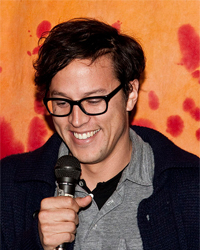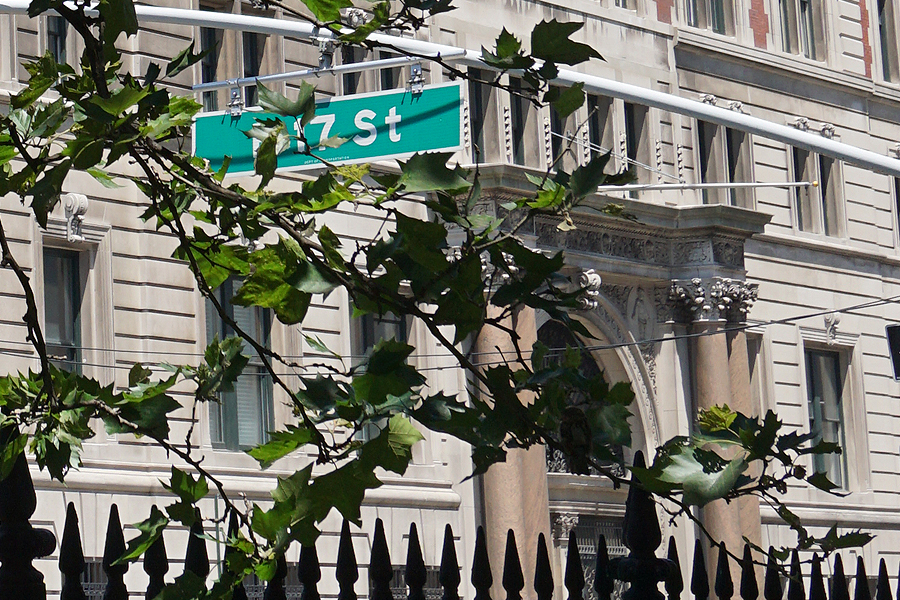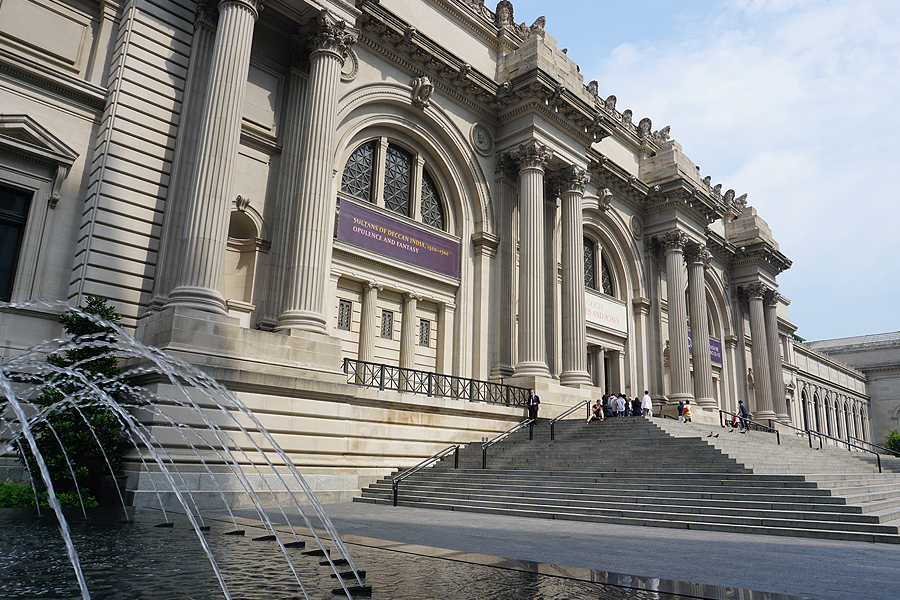View Part One and Part Two of Following The Footsteps of Dr. Kreizler: A Travel Blog.
Coinciding with our author’s 60th birthday today (many happy returns, Mr. Carr!), I have something a little different to offer for 17th Street’s visitors this week. For the past three months, I have been away from my Australian home and hearth for work-related travel in Canada. Given my close proximity to New York during this trip, I decided to take the opportunity to add on two weeks of pleasure-related travel at the end of the trip for a holiday in New York City — my first ever visit to the city! The following two-part blog series documents the Alienist-related components of my travel. Although I have tried to focus these blogs on locations visited during the books, I have also included a few other historical attractions that might be of interest to readers of the Alienist books even though they are not directly relevant to the books. So, without further ado, I invite you to join me as I follow the footsteps of Dr. Kreizler and the rest of the team on my holiday in Canada and New York.
The Bata Shoe Museum
The first attraction that I want to document might be the only one not located in New York state, but it is also the only one that quite literally involves following the footsteps of Dr. Kreizler — or, at least, Sara Howard. Those of you who have ever visited the History section of 17th Street will know that I have long adored historical clothing, particularly 19th century clothing, so you can imagine my excitement when I saw, on my final day in Toronto, that the Bata Shoe Museum was featuring an exhibition (until June of 2016) on “the pleasures and perils of dress in the 19th century.” The “Fashion Victims” exhibition showcases the Bata Shoe Museum’s collection of 19th century footwear along with a smaller but no less stunning array of matching dresses and under garments, including a pair of the Empress Elisabeth of Austria’s impossibly narrow shoes and gloves, and a beautiful but deadly Emerald green ball gown containing arsenic.
Although the exhibition featured footwear and clothing from as early as 1820, the photos I have shown here are a small selection of my favourite footwear exhibited from the late 19th century, not unlike those Sara would have kept in her wardrobe for more formal occasions; she presumably would have also kept a wide selection of more practical footwear for her day to day and sporting activities — not to mention the nail-studded climber’s boots we see her don in Chapter 2 of The Angel of Darkness. From left to right, the photos shown below include: a pair of elegant embroidered boots created by the firm of the most famous French shoe manufacturer of the late 19th century, Jean-Louis Francois Pinet, from approximately 1885; a pair of calf-hugging handmade, bespoke Swedish or German boots designed to look like a stockinged leg from the 1890s; a pair of button boots made with brocaded fabric (an alternative to the embroidery seen on the other boots in these photos) from the 1870s; a mass-produced boot made by the Parisian shoe manufacturer L. P. Perchellet with its original shoe box from 1875; and a stunning embroidered boot also created by Jean-Louis Francois Pinet from the 1880s.
In addition to the Fashion Victims exhibition (worth the price of admission alone), while I was there the museum also featured exhibitions of footwear through the ages, “the curious history of men in heels,” footwear of famous individuals donated to the museum, and something that probably would have been of great interest to Franz Boas and Clark Wissler: an exhibition of native North American footwear. As enjoyable as those exhibitions all were, as they weren’t relevant to the Alienist books I haven’t included any photos here. However, if you happen to be in Toronto at any stage in the future and have an interest in historical clothing, I can highly recommend that you allocate half a day to visit the museum. It was, without question, one of the highlights of my three month trip.
A Journey Down The Hudson River
After departing Toronto, I travelled by train down to Niagara Falls where I spent a day and night (an amazing experience that I would highly recommend if you ever get the chance) before embarking on a nine hour rail journey via Amtrak’s Empire Line down through New York state to New York City. While the first half of the journey took us through several hours worth of pretty if somewhat unremarkable farming scenery along with the occasional (mostly industrial) view of cities like Buffalo and Syracuse, the second half of the journey — from Albany onwards — saw the train snake alongside the Hudson River until we reached New York City, and this was unquestionably another of the highlights of my trip. I had been utterly unprepared for the size and beauty of the Hudson and mountains that lay beyond, bringing to mind my all-time favourite quote from either of the two Alienist books, spoken by the ever insightful Stevie Taggert.
The Angel of Darkness, Chapter 13:
“But it wasn’t any attempt at being rational that finally mended my spirits; no, it was the sight of the river itself, which always made me feel, somehow, like there was hope. She has that quality, does the Hudson, as I imagine all great rivers do: the deep, abiding sense that those activities what take place on shore among human beings are of the moment, passing, and aren’t the stories by way of which the greater tale of this planet will, in the end, be told…”
Nevertheless, those of you who have read The Angel of Darkness will know that the majestic Hudson River plays far bigger role in the novel than the scene in which Stevie makes that observation. Indeed, during The Angel of Darkness the team are are drawn from their usual haunts around Manhattan to the small town of Ballston Spa in upstate New York where they stay for at least half the novel; and to get to Ballston Spa, Dr. Kreizler decides to travel up the Hudson River on a steamer, the Mary Powell, as far as Troy (a town near Albany), before taking the train to their final destination. On this scenic interlude in the novel, the book’s narrator, Stevie Taggert, spends a considerable portion of his time smoking on the promenade deck with various other characters, first taking in the beauty of the Palisades and then at the “manor houses of the old Dutch and English river families” that dotted the hillsides further upstream. However, for Stevie, as for me, it was the untamed beauty of the Catskills and other mountains on the route that struck most profoundly. | Continue reading →
 In a recent interview with Entertainment Weekly regarding his latest production Beasts of No Nation, Cary Fukunaga shared some interesting details about how his role as director for The Alienist TV series might play out. Commenting on the lengthy preparation time the series’ “hundreds of pages” of material would require (as opposed to the “100 or 110 pages of material” required for a typical feature film), he explained: “If I were to direct the whole thing, I would probably break it up into two or three parts, almost as if it was two or three movies, and then prep them in that way.” Given the need for such a pre-production, he went on to state that he has considered taking on a “directional partner” so that they “could hop-scotch and help each other out and really approach it in the same spirit of a film, which is collaboration. They’re equal with you in terms of executing it.”
In a recent interview with Entertainment Weekly regarding his latest production Beasts of No Nation, Cary Fukunaga shared some interesting details about how his role as director for The Alienist TV series might play out. Commenting on the lengthy preparation time the series’ “hundreds of pages” of material would require (as opposed to the “100 or 110 pages of material” required for a typical feature film), he explained: “If I were to direct the whole thing, I would probably break it up into two or three parts, almost as if it was two or three movies, and then prep them in that way.” Given the need for such a pre-production, he went on to state that he has considered taking on a “directional partner” so that they “could hop-scotch and help each other out and really approach it in the same spirit of a film, which is collaboration. They’re equal with you in terms of executing it.”

